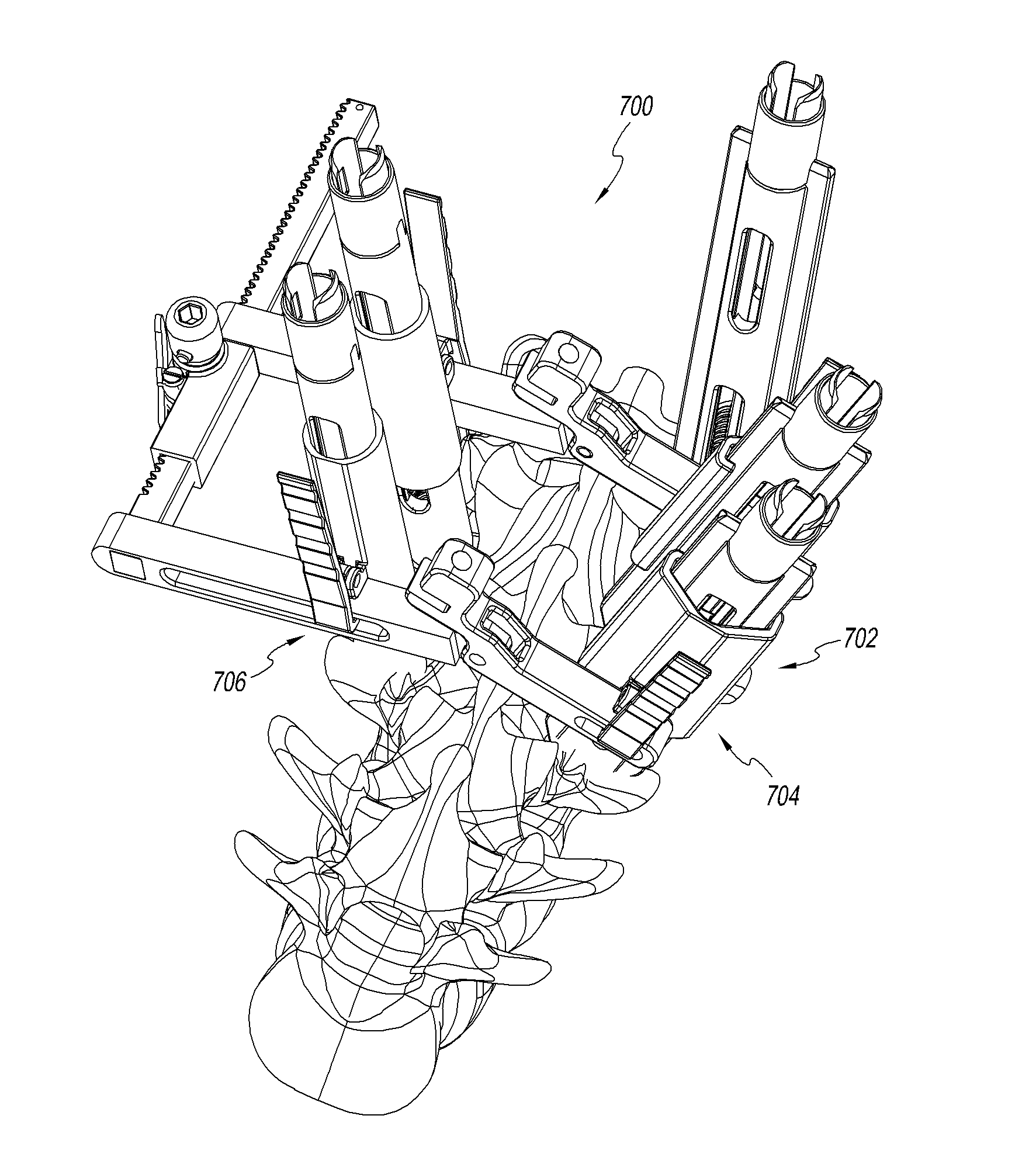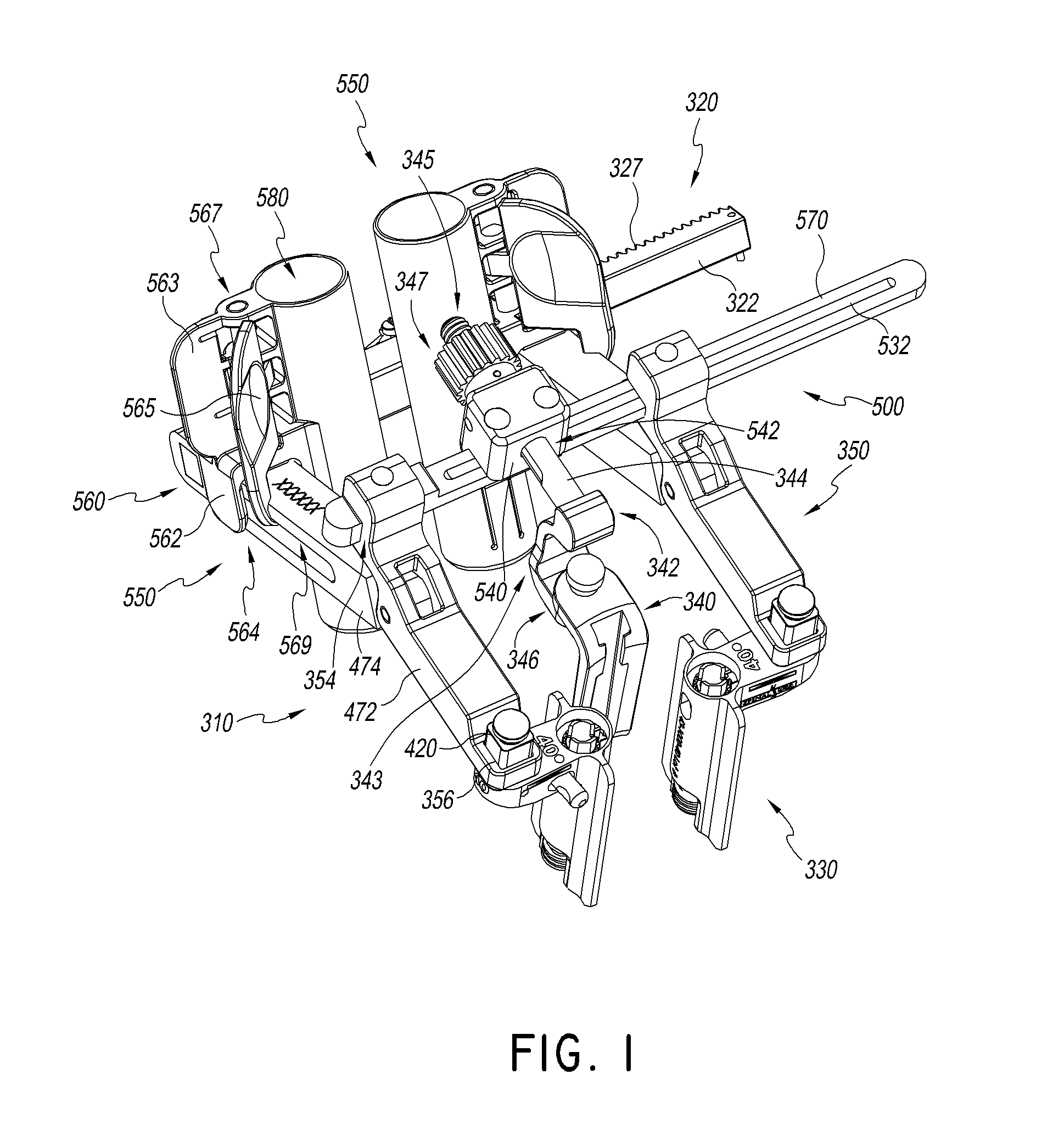Minimally invasive devices, systems and methods for treating the spine
a technology of spine and minimally invasive device, applied in the field of spine devices, systems and methods, can solve the problems of requiring a substantial recovery time, affecting the recovery process, and causing a large amount of pain and trauma to the patient, and achieve the effect of minimally disruptive muscle sparing
- Summary
- Abstract
- Description
- Claims
- Application Information
AI Technical Summary
Benefits of technology
Problems solved by technology
Method used
Image
Examples
Embodiment Construction
[0084]FIG. 1 illustrates an embodiment of a retractor system 310 used as part of a minimally invasive (MIS) and / or maximum access (MAS) spinal surgery. This disclosure may refer to MAS or MIS surgeries with respect to certain embodiments, but it is to be understood that such use does not preclude any embodiment described herein from being considered an MIS and / or an MAS surgery.
[0085]In some embodiments, the minimally invasive (MIS) and maximal access (MAS) surgical techniques and apparatuses disclosed herein can include a retractor body 320 with a plurality of arms 350. The device as illustrated has two arms extending from a cross bar 322 of the retractor body. Generally, during a surgical procedure the cross bar 322 can be positioned above a patient's back and the arms 350 can point laterally on an ipsilateral or operational side of the patient's spine. As used throughout the present disclosure, the “operational side” shall refer to a side of the patient from which disc space of t...
PUM
 Login to View More
Login to View More Abstract
Description
Claims
Application Information
 Login to View More
Login to View More - R&D
- Intellectual Property
- Life Sciences
- Materials
- Tech Scout
- Unparalleled Data Quality
- Higher Quality Content
- 60% Fewer Hallucinations
Browse by: Latest US Patents, China's latest patents, Technical Efficacy Thesaurus, Application Domain, Technology Topic, Popular Technical Reports.
© 2025 PatSnap. All rights reserved.Legal|Privacy policy|Modern Slavery Act Transparency Statement|Sitemap|About US| Contact US: help@patsnap.com



